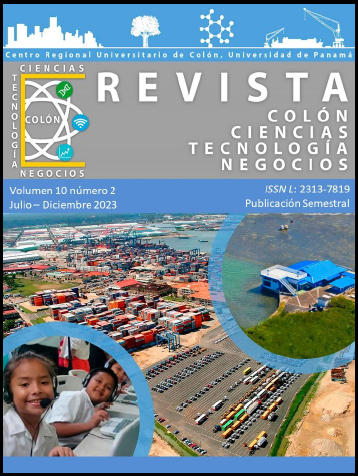

Copyright (c) 2023 Revista Colón Ciencias, Tecnología y Negocios

This work is licensed under a Creative Commons Attribution-NonCommercial-ShareAlike 4.0 International License.
This study aimed to assess the sensory stability on peeled green plantains (Musa paradisiaca) after using different concentrations of preservative salts to prevent rapid maturation caused by environmental conditions and poor postharvest handling, causing producers to reduce cost and quality. Three preservatives (ascorbic acid, citric acid, and sodium chloride) were prepared at concentrations of 0.95%, 1.5%, and 2.5%, respectively, and a control group was used with no preservatives added. The peeled plantains were immersed in the preservatives, dried, vacuum packed, and refrigerated at a T° of 8°C for 30 days. An untrained panel evaluated the product's acceptance at 10, 20, and 30 days, specifically considering color and texture. Ascorbic acid was the most effective preservative, with a significant preference (P< 0.05) for color and texture. The combination of vacuum and refrigeration provided better sensory stability and prevented postharvest losses due to the ripening and decay of raw green plantains exposed to the environment.